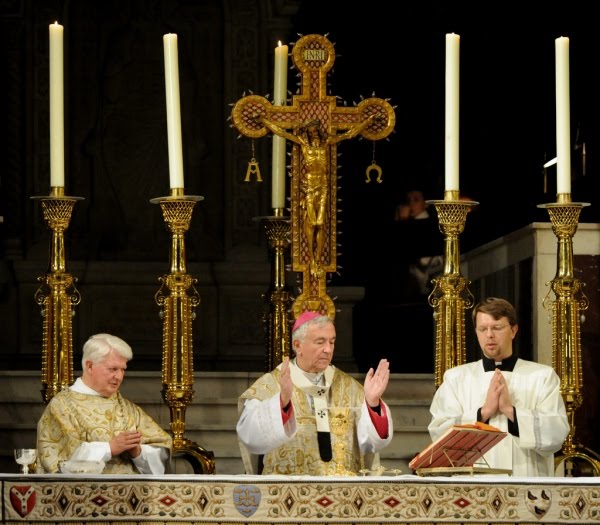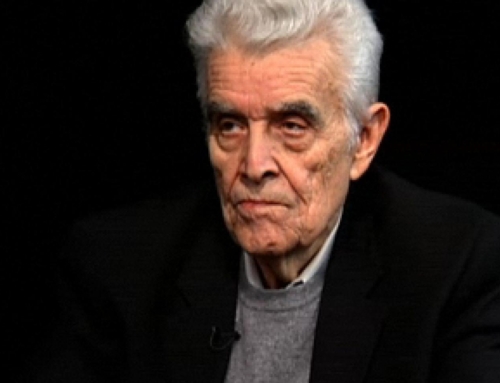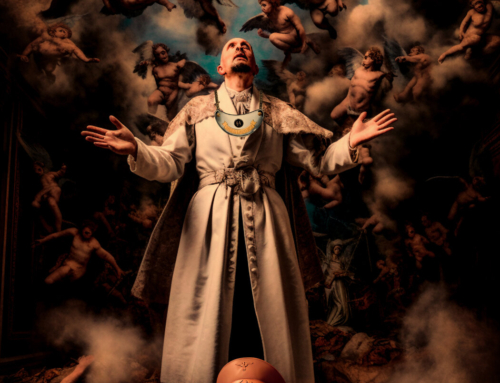Q: What’s the difference between a terrorist and a liturgist?
A: You can negotiate with a terrorist.
The old chestnut used to be applied to the trendy former priests who became liturgy directors of parishes after they married a nun, who were intent on introducing folk masses, felt banners, flying saucer type churches and happy clappy music. However, in the present day when devotees of the extraordinary form of the Mass seem to be gathering muster, the old joke now seems to apply equally well to some traditionalist liturgists. They know what’s right and you’d better not stand in their way!
Of course there are plenty of traditionalist Catholics who are okay with Pope Francis, recognize the validity of the Ordinary Form of the Mass and work to co exist with Catholics of other traditions, customs and cultural backgrounds. All well and good.
However, there are some who seem to think every problem in the church and the world can be laid at the door of the dreaded Novus Ordo.
Like many, I’m critical of the abuses of the new Mass–the dreadful architecture, banal art, saccharine and heterodox music, poor preaching etc etc that too often has gone along with the reforms of the Second Vatican Council, but my point has always been that these are abuses and when you take the Ordinary Form of the Mass–simply what’s in the book–just the words and rubrics–there’s not much wrong with it. Can there be some improvements? Sure, but I’ve asked traditionalists if they can tell me what is so terribly wrong with it–just the words in the book–not all the other abuses and things they don’t like that are associated with Vatican II.
Nobody’s given me a good answer yet.
In keeping with my own view that one should always give the benefit of the doubt and try to find what’s right rather than always find what’s wrong I thought I’d put together this list of what’s GOOD about the Novus Ordo Mass.
- It’s accessible. Having the liturgy in the vernacular helps it to be understood by the people. How can that be a bad thing?
- It’s flexible. We’re supposed to honor Latin as the language of our church and it is easy enough to integrate a little or a lot of Latin into the Novus Ordo Mass. It is also flexible musically. You don’t have to use Haagan Daz, hootenany and soft rock music. Learn Gregorian chant and polyphony. It fits
- It travels well. As much as we love beautiful architecture, music, vestments and pipe organs, there are times when the Mass is celebrated at camp, in prison, on the battlefield, in a tin hut or on a mission field, a mountaintop or a beach. The simplicity of the Novus Ordo means it can be celebrated more easily in such situations.
- There is more Scripture read, and it is read in the language people can understand. How can it be a bad thing for there to be a wider range of Sacred Scripture being made available to the people?
- The gospel procession is restored. Moving the book from one side of the altar to the other? That’s not really a procession is it? In the Sarum rite–the ancient English rite–there were a good number of processions–the gospel procession being one. Nice to have that ancient custom restored.
- The prayers of the faithful. These are often abused, but when they are well composed and fitting they are a great assistance in leading the people in prayer.
- The offertory procession is restored. The offertory procession is an ancient part of the liturgy in which the people of God bring forward the gifts of the altar. That’s a beautiful restoration of an ancient tradition.
- The offertory prayers. That’s a connection with the Jewish prayers Jesus would have said at the Last Supper. So that’s a bad thing?
- It’s adaptable. The adaptability means the abuses have come in, but it also means all sorts of traditional customs can be retained. Pope Benedict wished for the Extraordinary Form to inform the celebration of the Ordinary Form. So it can be celebrated ad orientem, with altar rails, communion administered to the faithful kneeling and on the tongue, well-trained altar servers, good music, vestments, architecture and art. Yes, bland and banal is possible, but so is grand and glorious.
- Hymns. Yes I know hymns are supposedly a modern “Protestant” innovation…it’s debatable, but simply taking them for what they are, there are some excellent hymns which really do help the people lift their hearts in worship, express their faith and help to catechize. Used to complement the liturgy they can be a good thing.
- Its accessibility makes it better for evangelization. I know the Mass is not primarily for evangelization, but when potential converts start attending Mass, to be able to understand and follow the words and actions eases their entrance into the church and enables the process to be more welcoming.
- It’s simple. The plain words and actions of the Novus Ordo provide for a celebration with noble simplicity. Just saying the black and doing the red has a down to earth dignity–not overly ornate and fancy nor banal and vulgar.
Does this mean I am against traditionalists and disapprove of the Extraordinary Form of the Mass? No. It’s good to have both and each should inform the other. A person is most often right in what he affirms and wrong in what he denies. It is possible therefore to be critical of a thing without rejecting it entirely just as it is possible to see the good in a thing without endorsing it 100%







Father, I love you! I’ve been having conversations with a few friends about the pros and cons of both the traditional mass and the ordinary form. The points you bring up here have already helped inform those conversations. So thank you!
[…] Longenecker. Without condemning either, he’s given lists of 12 things he likes about both the Novus Ordo and the Latin […]
[…] fader Longenecker ta sig vatten över huvudet. Varje påstående som han framför i sin artikel ”Twelve Things I Like about the Novus Ordo Mass” kan och har motbevisats i den rikliga litteraturen i ämnet, som han verkar vara ovetande om. […]
[…] Original erscschien unter: https://dwightlongenecker.com/twelve-things-i-like-about-the-novus-ordo-mass/ […]